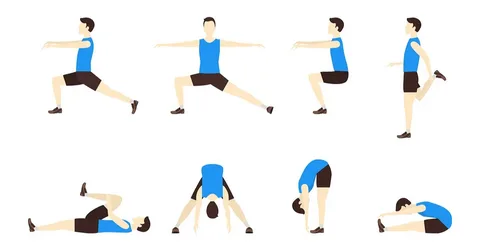Introduction to Relative Strength Calculators
Have you ever wondered how your lifting abilities stack up against others, or even how to evaluate your strength relative to your body size? That’s where a relative strength calculator comes in handy. This powerful tool isn’t just for elite athletes—it’s for anyone interested in tracking and improving their strength training. In this post, we’ll explore what a relative strength calculator is, why it’s valuable, and how to use it to maximize your workouts. read more
What is a Relative Strength Calculator?
A relative strength calculator is a tool used to evaluate an individual’s strength relative to their body weight. This calculation helps you understand how strong you are compared to others of similar size, and can be a game changer in both training and competitions.
Why Use a Relative Strength Calculator?

Objective Measurement: It provides a clear, numerical value to your strength levels, taking guesswork out of the equation.
Personalized Goals: By understanding your relative strength, you can set more targeted, personalized fitness goals.
Progress Tracking: It’s an effective way to measure progress in strength training, especially if you’re looking to increase efficiency rather than just lifting heavier weights.
Competition Preparation: For competitive athletes, knowing your relative strength can help you see where you stand against the competition and identify areas for improvement.
How Does a Relative Strength Calculator Work?

To get started with a relative strength calculator, you’ll need two key pieces of information:
- Your Body Weight: This helps the calculator adjust the score to your size.
- Your Lift Weight: This is the amount of weight you can lift, for exercises like squats, bench presses, or deadlifts.
The calculator then uses a formula to provide a score that represents your strength relative to your weight. This score can help you compare yourself to others in a meaningful way.
Understanding the Formula
The typical formula for calculating relative strength might look complex, but it’s pretty straightforward when broken down:
- Relative Strength = Lift Weight / Body Weight This formula adjusts your raw lifting power by your body size, giving a fair perspective of your strength.
Using the Relative Strength Calculator to Enhance Your Training

Identify Strengths and Weaknesses: Use your relative strength score to pinpoint which areas of your body are strongest and which might need more work.
Tailor Your Workout: Adjust your training program based on your relative strengths and weaknesses to become a more balanced athlete.
Set Realistic Goals: Knowing your relative strength can help you set realistic and challenging goals that are personalized to your fitness level.
Monitor Progress: Regularly using the calculator can show you how your strength is improving over time, giving you a clear indication of your training effectiveness.
Tips for Getting the Most Out of Your Relative Strength Score
- Consistency is Key: Regularly track your scores to monitor your progress and adjust your training accordingly.
- Combine with Other Metrics: Use your relative strength score in conjunction with other fitness metrics for a comprehensive view of your health and fitness.
- Stay Motivated: Use improvements in your score as motivation to keep pushing your limits.
Common Mistakes to Avoid
- Ignoring Other Forms of Fitness: While strength is important, don’t neglect other aspects like cardiovascular health, flexibility, and endurance.
- Over-reliance on Numbers: While the numbers can be helpful, listen to your body and consider how you feel during workouts.
Conclusion: Empowering Your Fitness Journey
Using a relative strength calculator can transform how you approach your fitness routine. It offers a clear, objective measure of your strength relative to your size, providing valuable insights that can help tailor your training regimen, set realistic goals, and track your progress. Whether you’re a gym newbie or a seasoned athlete, integrating this tool into your fitness journey can lead you to more personalized, effective, and rewarding workouts.
{ “@context”: “https://schema.org”, “@type”: “Article”, “mainEntityOfPage”: { “@type”: “WebPage”, “@id”: “https://dotscalculator.online/relative-strength-calculator/” }, “headline”: “How to Use a Relative Strength Calculator to Enhance Your Training”, “description”: “Maximize your training with our Relative Strength Calculator! Perfect for athletes to gauge and enhance strength effectively.”, “author”: { “@type”: “Person”, “name”: “Alex Johnson” }, “datePublished”: “2024-08-24”, “publisher”: { “@type”: “Organization”, “name”: “Dots Calculator” } }





